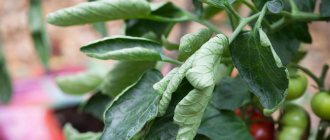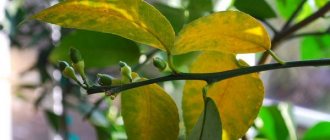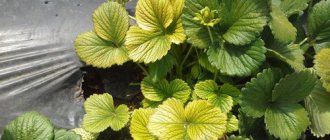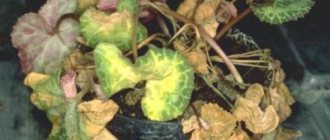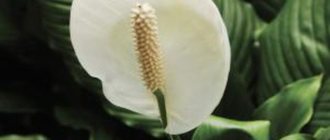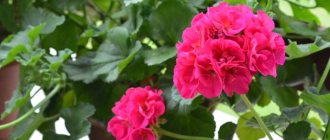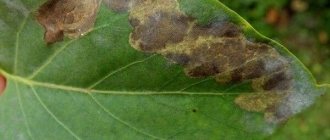Author: Natalya Category: Houseplants Published: February 17, 2019Republished: February 17, 2019Last edits: January 11, 2021
- Dividing the bush
- Arrowroot leaves are turning yellow
- White-veined arrowroot (Maranta leuconeura)
Arrowroot is a plant that is demanding in terms of maintenance conditions and care, but the beauty of its leaves, if they are healthy and well-groomed, will pay off all your efforts. In their natural habitats, large arrowroot leaves are used by local residents to make wicker baskets, and the starchy rhizomes are used as food. The rhizomes are also used to make dietary food and thickeners for jellies and sauces. Arrowroot does not tolerate direct sun and requires special, tropical conditions.
From the information contained in our article you can find out:
- what conditions are needed for arrowroot;
- how to care for this tropical beauty;
- how to solve the problems that arrowroot sometimes encounters.
Planting and caring for arrowroot
- Flowering: decorative deciduous plant.
- Lighting: partial shade.
- Temperature: in summer – 22-24 ˚C, in winter – 16-18 ˚C.
- Watering: the soil should be slightly moist all the time.
- Humidity: high. It is recommended to spray the leaves daily in hot weather and keep the plant on a tray with damp sphagnum moss.
- Feeding: from March to August twice a month with a weak solution of complex mineral fertilizer for deciduous plants.
- Dormant period: from October to February.
- Replanting: in the spring once every two years.
- Reproduction: vegetative - by cuttings and dividing the bush.
- Pests: mealybugs, false scale insects and spider mites.
- Diseases: due to improper care, stem or root rot may develop, and the leaves may lose their decorative properties.
Read more about growing arrowroot below.
plant (lat. Maranta) is a representative of the genus of perennial grasses of the Marantaceae family. The genus includes about 25 species growing in the tropical zone of America. The plant was named in honor of Bartolomeo Maranta, a medieval doctor and botanist. Arrowroot also has other names - prayer plant, praying grass, “ten commandments” (based on the number of spots on the leaves of one type of arrowroot) and arrow-shaped root. Arrowroot flowers are decorative foliage plants, and not at all flowers in our usual sense, but their leaves are a real masterpiece created by nature.
Manifestations of diseases, causes, treatment
Leaves turn yellow and dry
The leaves or their tips first turn pale, then acquire a brown tint and dry out - a symptom of sunburn .
Why do arrowroot leaves turn yellow and dry? She does not like bright light, especially direct sunlight. She likes soft, diffused light.
If you notice similar symptoms on the leaves, immediately move the plant to another place, less bright, or diffuse the light. To do this, you can shade the window with matte paper or fabric.
The photo shows a selection of dry arrowroot leaves:
Why do the leaves curl?
Why do arrowroot leaves curl? Plants turn yellow and dry, fall off, slow growth of the plant, yellowing of the lower leaves - all these are symptoms of insufficiently moist air or dry soil.
Or both together. How to save arrowroot? Remove dead leaves, surround the flower with moist peat - it has increased moisture capacity and will moisturize the plant well. Keep the flower away from radiators in winter.
Use household humidifiers and spray the leaves regularly. Excessive dry air can lead to spider mite damage to the plant.
Remember to keep the soil moist . In summer, the flower requires abundant watering, in winter - moderate. Do not over-moisten the soil, otherwise the plant will get sick.
The trunk and rhizome rot
The trunk and rhizome rot - waterlogging of the soil, cold. The stems have not completely rotted yet - there is a chance to save Maranta.
Urgently
move the flower to another pot, removing everything rotten.
Fertilize the soil with a mixture for decorative houseplants. In autumn-winter, reduce watering. Maintain the temperature at a level favorable for the plant - in summer from 22 to 25 degrees Celsius, in winter from 15 to 20.
Yellowish-brown leaf tips
Yellowish-brown leaf tips, slow growth - lack of nutrition.
It is necessary to feed the plant with mineral-organic fertilizer. Feeding is carried out all year round, in spring - summer - once every two weeks, in autumn - winter - once a month.
Brown spots
The appearance of brown spots on the leaves is due to waterlogging by spraying . Try to spray less thoroughly, away from the plant.
Botanical description
Indoor arrowroot flower is a plant with a tuberous rhizome, its leaves are elliptical in shape, basal or double-rowed on the stems. The colors of the leaves are varied and incredibly beautiful: the background color varies from almost white to dark green, and bright spots, stripes and veins stand out against the background. The upper side of the leaf is much brighter than the bottom, and this is especially striking when the arrowroot flower makes its “prayer”: in the evening it raises the leaves and slightly folds them so that only the plain underside of the plates is visible, and in the morning it lowers and unfolds its beautiful leaves, the sight of which inspires admiration every time.
- Homemade medicinal plants
Indoor arrowroot blooms with white, cream or lilac asymmetrical three-membered flowers, collected in apical spike-shaped inflorescences. The flowering of arrowroot is not God knows what a spectacle, so it is better to remove the flowers immediately so that the plant does not waste its energy. The fruit of the arrowroot is a single-seeded capsule. The indoor arrowroot plant rarely grows above 30-40 cm in height, so it can be kept in any, even the smallest room, although natural plant species sometimes reach 150 cm in height.
Caring for arrowroot flowers is not as difficult as is commonly believed, so even a novice gardener can grow this treasure.
Why do arrowroot leaves turn yellow?
The plant will “warn” the grower in advance that the arrowroot leaves will soon turn yellow. The tips of the leaves will initially turn slightly pale and then turn slightly yellow. This shade will gradually spread over the entire surface of the leaf.
As a rule, the reason why arrowroot leaves turn yellow is improper care:
Thus, there are several factors why arrowroot leaves turn yellow. They must be identified in time and efforts must be made to eliminate them. Proper care will allow the flower to grow stronger, and it will please the eye for a long time.
Read also: The best breeds of Indian ducks for home breeding
Caring for arrowroot - video
Caring for arrowroot at home
Growing conditions
Caring for arrowroot involves creating optimally comfortable conditions for the plant. What are these conditions? Firstly, lighting: the home arrowroot flower grows best in partial shade; direct sunlight on the leaves in spring and summer must be excluded. Secondly, a comfortable air temperature for arrowroot in summer is 22-24 ºC, in winter – 16-18 ºC, but certainly not lower than 10 ºC. Successful cultivation of arrowroot also largely depends on air humidity and soil moisture - this is third.
To water arrowroot, you can only use soft water at room temperature that does not contain lime. The frequency of watering is determined by the condition of the soil in the pot: it should be slightly moist all the time. To keep the air humid enough for tropical arrowroot, keep it on a tray with wet pebbles or expanded clay, or even better, with damp sphagnum. In addition, regular spraying of the plant leaves from a fine spray with settled or filtered water at room temperature is necessary. During the hot season, arrowroot should be sprayed daily.
Transfer
Arrowroot is transplanted on average once every two years in the spring into a wide, shallow pot, larger in diameter than the previous one by only a couple of centimeters. First, pour a thick layer of expanded clay into the new pot so that moisture does not stagnate in the roots of the arrowroot. Then place a layer of slightly acidic soil (pH about 6), consisting of sand, peat and garden soil in a ratio of 1: 2: 3 with the addition of crushed coal and a handful of pine soil, then carefully transfer the arrowroot into a new pot along with a lump of earth and add as much soil , how much will be needed to fill the pot.
Before you remove the plant from the old pot, tidy it up: remove old dried leaves so that the plant spends energy on the formation of young shoots, and not on withered foliage. Professionals recommend cutting off all the shoots before replanting, leaving only one internode on them, then the new fresh growth will be thicker, and after a while your arrowroot will turn into a lush, variegated bush.
- Types of slipway (photo)
Fertilizer
An important factor in the successful cultivation of indoor arrowroot is the application of fertilizers. Arrowroot needs feeding during the period of active growth, so from March to August it is fed twice a month with liquid complex fertilizer for decorative foliage plants. Please note that the solution should be weak (one gram of complex fertilizer per liter of water), because arrowroot is very sensitive to both excess moisture in the roots and excess nutrients in the soil.
Fertilizer and feeding
Arrowroot needs mineral and organic fertilizers; it reacts sharply to the slightest excess feeding. Experienced flower growers recommend diluting all fertilizers with 2 times the amount of water specified in the instructions.
Fertilizing is relevant during the period of active growth - from the beginning of spring to the beginning of autumn. Organic and mineral fertilizers must be alternated and the soil must be fertilized once every 2 weeks. Pokon, Bona Forte and Agricola formulations have received many positive reviews.
But the mixture must first be kept for 24 hours and only then the substrate must be watered.
Fertilizing is relevant during the period of active growth - from the beginning of spring to the beginning of autumn. Organic and mineral fertilizers must be alternated and the soil must be fertilized once every 2 weeks. Pokon, Bona Forte and Agricola formulations have received many positive reviews.
Arrowroot propagation
Dividing the bush
Arrowroot is propagated at home by vegetative methods. For example, by dividing a bush during the next plant transplant. To do this, the arrowroot bush is carefully divided into two or more approximately equal parts, cutting the rhizome in such a way that each section has a sufficient number of roots for life. The parts are planted in pots in an arrowroot substrate, watered with lukewarm water, loosely covered with a transparent plastic bag and kept warm until young leaves appear. Then the bag is removed and the plant is cared for as usual.
Cuttings
How to propagate arrowroot if you do not dare to cut the rhizome of the flower? Arrowroot shoots cut during shearing can be used as cuttings for its propagation. A sufficient length of the cutting is 8-10 cm, and it should have two internodes or at least a pair of leaves. The bottom cut is made a couple of centimeters below the node. Sections of shoots are placed in water for rooting, and when roots grow on them, the cuttings are planted in the ground and covered with a transparent plastic bag to create greenhouse conditions that accelerate establishment. Cuttings taken from May to September take root faster and more reliably.
Pests and diseases
It must be said that arrowroot is not affected by any specific diseases; problems with the plant arise mainly due to improper care. The same can be said about insects.
Most often, arrowroot suffers from red spider mites and mealybugs. The presence of a mite is determined by the presence of a thin web on the underside of the leaf blades and the falling of leaves, and the appearance of these pests is provoked by too dry air in the room. Damaged leaves should be removed and the plant should be sprayed with Actellik or Fitoverm.
Mealybugs concentrate mainly on leaf petioles and need to be washed off with a soapy solution (20 g of soap per liter of water) - just remember to remove the soap from the plant afterwards. If this measure is not enough, you will have to spray the arrowroot with Actellik solution (2 ml per liter of water) several times until you are sure that the plant is no longer in danger.
Arrowroot leaves are turning yellow
Frequent questions about why arrowroot turns yellow do not suggest any clear answer. There may be several reasons, because decorative deciduous plants respond to stress and disease by changing the color and texture of the leaf blades.
- Aloe (Aloe) – care, photos, types
- Firstly, the cause may be too cold air in the room.
- Secondly, yellow spots on the leaves may be signs of sunburn.
- Thirdly, air humidity is too low, fourthly, drafts.
In addition, the absolutely obvious reason is insufficient watering, as a result of which the lower leaves of the plant turn yellow. What to do if the arrowroot leaves turn yellow? Re-read the rules for caring for the plant, identify the cause and eliminate it. Just don’t expect quick success: soon only troubles arise, and the plant, like a child, requires care, attention and time.
Arrowroot is drying
Why does arrowroot dry out? First of all, this may be due to a lack of nutrients in the soil: first, the tips of the arrowroot leaves dry out, then brown spots appear on them. The plant behaves the same way due to lack of moisture: the lower leaves turn yellow, and the tips of the upper ones dry out. Arrowroot also dries out when you forget to maintain high humidity in the room. The presence of lime in the soil also leads to the same result, so monitor the soil pH.
Why do the leaves curl?
Arrowroot has this peculiarity - it folds its leaves every evening and opens them every morning. But if you first observe the tips of the leaves drying out and then curling, then the reason is either a lack of moisture in the soil or because the arrowroot is freezing - move it to a warmer room and make sure that it does not fall into drafts. And remember: no matter what problems arise with indoor flowers, in particular with arrowroot, you need to look for the cause in the rules for caring for the plant. Determine where you violated them, correct the mistake, and the problem will go away by itself.
Main causes of diseases
Arrowroot leaves curl and ends dry out, most often due to violation of maintenance conditions. Improper care is the main reason why a flower loses its decorative properties. A tropical plant requires long daylight hours, constant soil moisture, but without stagnant moisture, and frequent spraying.
Unsuitable conditions of detention
Errors in care that cause leaves to turn yellow and dry:
- Temperature indicators . Leaves dry out when the room temperature is above 25 °C in summer and 20 °C in winter. Cold and humidity, on the contrary, do not lead to drying out, but to softening of the foliage. The petioles become soft, bend towards the surface of the earth, and rotting begins.
- Lighting. Direct sunlight is harmful to arrowroot leaves. They can leave burns on their surface and lead to twisting. A characteristic sign of such a problem is yellowed spots that become thinner and even form holes on the surface of the leaf blade. If the flower is on a south window, it needs to be darkened. In general, it is better to place pots with arrowroot in the west or east. If there is a lack of lighting, the leaves will curl into a tube.
- Cold drafts. Sharp temperature fluctuations cause leaves to fall off from hypothermia.
- Soil composition . Arrowroot foliage dries out or becomes covered with brown spots if there is a lack of nutrients in the soil. The soil should be acidic, constantly slightly moist, but not too wet. Be sure to apply fertilizers every two weeks in the summer, and in winter - once a month, alternating organic mixtures and ready-made mineral complexes.
When watering arrowroot, you should use only water at room temperature or slightly warmer. Cold water damages thin roots, the plant stops growing and developing, new leaves do not appear, and the flowering phase is often absent.
Care errors
One of the main reasons for yellowing is improper watering . If the soil is too dry, the upper leaves of the flower turn yellow, fall off, or curl into a tube. The plant withers if the upper third of the soil layer dries out, since it is in this zone that the bulk of the root system is located. You need to water up to 3 times a week in the hot season and once a week from late autumn to early spring. If there is excess moisture in the pot, the stems begin to rot, the leaves become damp, dark, soft, and crumble. Excess moisture at low temperatures is especially destructive for arrowroot - under these conditions, root rot often develops, which can lead to the death of the flower.
Care secrets: how to properly water an orchid if the flower grows at home in a pot or cache-pot?
A deficiency of essential nutrients also has a bad effect on the plant . Lack of nutrition, especially nitrogen, potassium and phosphorus, causes a slowdown in the growth of green mass. It is recommended to apply complex fertilizers containing more nitrogen from the beginning of spring, and by summer switch to fertilizers with potassium, phosphorus and other elements. Also, to ensure that the plant receives all the necessary substances, alternate mineral mixtures with organic ones.
Low air humidity causes the leaves to curl and dry out. Arrowroot is one of the most moisture-loving plants, so it is recommended to grow it not in a separate pot, but in a florarium , which protects the soil from moisture evaporation. Dry air leads to the fact that the tips dry out first, then the entire surface, the trunks become elongated and thin. Plants are more susceptible to pest attacks and root rot. In summer it is recommended to spray the flower up to 2 times a day, and in winter - 1 time every 3 days and even more often if the air in the room is too dry. As an option, you can install a humidifier next to the pot, cover the tree trunk with moistened moss, or place containers of water nearby.
Yellowing of leaves in the lower zone, almost above the very surface of the earth, may be a physiological norm . Plants that are more than 4–5 years old do not fully absorb nutritional components from the soil, and therefore lose some of their leaves. Drying of the leaves at the top should alert you - this most likely signals a disease or improper care. Once a year or less often, it is recommended to carry out sanitary pruning for a plant that has lost its decorative effect. Use sharp tools, and sprinkle all cuts with crushed charcoal or activated carbon.
Pest attacks
Sometimes arrowroot dries due to attacks by insect pests:
- Spider mite. A small insect that settles on almost any indoor plants. Its appearance is indicated by thin whitish threads, similar to cotton wool, that cover the underside of the leaf blade and petioles. The leaves inside become pale, after which they turn yellow and dry out. Spider mites feed on juices extracted from soft petioles and young leaves.
- Mealybug. A small oval insect of whitish or gray color. They feed on juices obtained from leaves. In the place where the insect bites through the leaf blade, you can see small holes. The infected plant begins to wither, turns yellow, the foliage first becomes covered with spots, which then merge and cover the entire surface.
- Shield . A brown or yellow oval-shaped insect that also feeds on juices. If the infection is too severe, the growth and development of the flower stops, the leaves curl, become like thin parchment, and turn yellow. The danger of the insect is that its waste products - sticky honeydew - are a breeding ground for the fungus. If the area of infection is more than 60%, the flower cannot be treated.
- Thrips. Small brown-yellow or dark brown insects up to 2 mm in length. They infest the leaves, causing them to change color, becoming whitish on top and spotted inside. They develop more often in conditions of high humidity and elevated temperature in the room, actively affecting neighboring flowers in the room.
In the initial stages, the flower can be saved using traditional methods, for example, washing it with soap and water or treating it with tinctures of calendula, garlic, or oregano. In difficult cases, insecticides must be used, and treatment is carried out at least 3 times with a break of 7 days.
Types and varieties
White-veined arrowroot (Maranta leuconeura)
An inhabitant of Brazilian tropical forests with a short (25-30 cm tall) stem, oval leaves, up to 15 cm long, up to 9 cm wide, on petioles up to 2 cm long. The upper side of the leaf is dark green, with a silvery side running down its center the stripe, lateral veins are silvery-white with a light green pattern, the underside of the leaf is reddish or bluish-green.
This species is rarely found in culture; its varieties are grown more often:
- Kerchoven's variety (Maranta leuconeura var. kerchoveana) - the upper side of the leaf blade is bright green with dark green spots in the shape of eyes and feathers, a white stripe runs along the central vein, the underside has a red tint with a blue tint;
- variety Masange (Maranta leuconeura var. massangeana) - a variant of the Kerkhoven variety, but the spots are not dark green, but olive-brown;
- red-veined or tricolor variety (Maranta leuconeura var. erythrophylla or Maranta tricolor) with leaves from light green to dark green, lighter towards the periphery. There are yellow-green and light green spots along the central vein. The leaves are velvety, dark crimson on the underside.
Maranta bicolor
It is distinguished by oval, slightly wavy leaves up to 15 cm long on a short reddish petiole. The upper side of the leaves is green with dark green and brown spots along the central vein; the leaves are pubescent underneath.
Reed arrowroot (Maranta arundinacea)
A compact shrub up to 120 cm high with long, up to 25 cm, ovate, pubescent leaves below, dark green with a bluish tint.
Any type or variety of the plant is worth the effort and time spent on growing it, since the exquisite beauty of arrowroot leaves leaves no one indifferent.


